
HISTOCHEMISTRY AND CELL BIOLOGY
Scope & Guideline
Elevating Research Standards in Cell Biology
Introduction
Aims and Scopes
- Histochemical Techniques and Applications:
The journal emphasizes the development and application of histochemical techniques for the visualization and characterization of cellular components. This includes novel staining methods and imaging technologies to elucidate cellular structures. - Cellular and Molecular Biology:
Research published in the journal covers a wide range of topics within cellular and molecular biology, focusing on cellular mechanisms, signaling pathways, and the role of specific proteins in various biological processes. - Pathophysiology and Disease Mechanisms:
The journal also addresses the pathological aspects of cell biology, exploring how alterations in cellular processes contribute to diseases, including cancer, neurodegenerative disorders, and autoimmune conditions. - Innovative Imaging Techniques:
There is a consistent focus on the use of advanced imaging techniques, such as electron microscopy and fluorescence microscopy, to study cellular architecture and dynamics at high resolution. - Comparative Biology and Model Organisms:
The journal encourages studies that utilize model organisms to draw parallels in human biology, providing insights into evolutionary biology and comparative anatomy.
Trending and Emerging
- Molecular Imaging and Quantitative Analysis:
There is a growing trend towards the use of molecular imaging techniques combined with quantitative analysis to study cellular processes, enabling researchers to visualize dynamic cellular events in real-time. - Stem Cell Research and Regenerative Medicine:
Research focusing on stem cells and their potential applications in regenerative medicine is increasingly prominent, reflecting the interest in harnessing stem cell properties for therapeutic purposes. - Pathogenesis of Diseases:
An uptick in studies addressing the cellular and molecular mechanisms of disease pathogenesis, particularly in relation to cancer and neurodegenerative diseases, signifies a trend towards translational research. - Integrative Approaches to Tissue Engineering:
Emerging themes in tissue engineering and regenerative biology are becoming more prevalent, with a focus on constructing functional tissues and understanding the cellular interactions within engineered environments. - Epigenetics and Cellular Memory:
Research exploring epigenetic modifications and their impact on gene expression and cellular behavior is on the rise, highlighting the importance of epigenetic regulation in development and disease.
Declining or Waning
- Traditional Histochemistry Techniques:
There is a noticeable decline in papers focusing solely on classical histochemical methods, as the field increasingly incorporates more advanced molecular and imaging techniques. - Basic Morphological Studies:
Basic descriptive studies that do not integrate functional or molecular aspects are becoming less frequent, reflecting a shift towards more applied and mechanistic research. - Non-Cellular Models:
Research that relies on non-cellular models, such as biochemical assays without cellular context, is less represented, indicating a trend towards favoring in vivo and cellular studies.
Similar Journals

CELLULAR & MOLECULAR BIOLOGY LETTERS
Unlocking the Secrets of Life at the Molecular LevelCELLULAR & MOLECULAR BIOLOGY LETTERS, published by BMC, is a premier open-access journal dedicated to disseminating high-quality research in the fields of Biochemistry, Cell Biology, and Molecular Biology. Established in 1996, the journal has emerged as a leader in its domain, boasting an impressive Q1 ranking across three critical categories as of 2023, reflecting its significant impact within the scientific community. With an ISSN of 1425-8153 and an E-ISSN of 1689-1392, it offers accessible research findings to a global audience, having been open access since 2013. Situated in the United Kingdom, at CAMPUS, 4 CRINAN ST, LONDON N1 9XW, the journal continues to serve as a vital resource for researchers, professionals, and students, contributing to advancements in the understanding of cellular and molecular processes. By providing a platform for original research, reviews, and short communications, CELLULAR & MOLECULAR BIOLOGY LETTERS plays a crucial role in fostering dialogue and collaboration within the scientific community.

MOLECULAR AND CELLULAR BIOCHEMISTRY
Unraveling the Mysteries of Molecular BiologyMOLECULAR AND CELLULAR BIOCHEMISTRY, an esteemed journal published by SPRINGER, serves as a prominent platform in the fields of biochemistry and molecular biology. With a history of dissemination since 1973, this journal has made significant contributions to the understanding of biochemical processes at the molecular level. The MOLECULAR AND CELLULAR BIOCHEMISTRY journal focuses on a myriad of topics including but not limited to cellular biochemistry, clinical biochemistry, and interdisciplinary approaches in medicine, boasting a commendable categorization in the 2023 Scopus ranks where it falls under Q3 in Cell Biology, Q2 in Clinical Biochemistry, Q1 in Medicine (miscellaneous), and Q2 in Molecular Biology. Although the journal is not open access, it provides access options through institutional subscriptions, making valuable research accessible to a wider audience. With its rigorous peer-review process and high impact within the scientific community, this journal aims to advance knowledge and stimulate exploration in biochemical research, making it essential reading for researchers, professionals, and students alike.
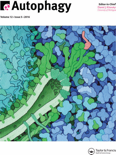
Autophagy
Elevating Research in the Science of AutophagyAutophagy is a premier peer-reviewed journal published by Taylor & Francis, Inc. in the United States, focusing on advances in the fields of Cell Biology and Molecular Biology. With an impressive impact factor reflected in its Q1 ranking in both categories, Autophagy stands as a vital resource for researchers and professionals dedicated to understanding the intricate mechanisms of cellular degradation and recycling. The journal has been a cornerstone of scientific communication since its inception in 2005, continuing to flourish through 2024, fostering collaboration and innovation in the study of autophagic processes. Although it does not currently offer Open Access options, the journal remains highly regarded for its rigorous peer-review process and its commitment to publishing high-quality, impactful research. By bridging fundamental research with clinical applications, Autophagy plays a crucial role in advancing our understanding of various diseases, making it an essential tool for scholars and practitioners in the biomedical field.

CELL RESEARCH
Illuminating the Pathways of Life SciencesCELL RESEARCH is a premier peer-reviewed journal dedicated to advancing the field of cell biology and molecular biology, published by SpringerNature. With an impressive impact factor and consistently ranking in the Q1 quartile for both cell biology and molecular biology, this journal serves as a pivotal resource for researchers, professionals, and students seeking to explore the latest discoveries and advancements in cellular mechanisms and their implications for health and disease. Since its inception in 1996, CELL RESEARCH has cultivated a distinguished reputation, currently boasting ranks in the top percentile of Scopus categories, reaffirming its influence and relevance to the scientific community. Although it is not an Open Access journal, its rigorous selection process ensures the publication of high-quality articles that contribute significantly to our understanding of life sciences. For those deeply engaged in the realms of biochemistry, genetics, and molecular biology, CELL RESEARCH is an essential conduit of innovative research and critical insights.
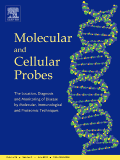
MOLECULAR AND CELLULAR PROBES
Unveiling Molecular Interactions for Tomorrow's DiscoveriesMOLECULAR AND CELLULAR PROBES, published by Academic Press Ltd - Elsevier Science Ltd, stands as a prominent journal at the intersection of cell and molecular biology. With an ISSN of 0890-8508 and an E-ISSN of 1096-1194, this journal has consistently contributed to the scientific discourse since its inception in 1987, converging its scholarly content through to 2024. As a member of Q3 in both Cell Biology and Molecular Biology categories, it provides a platform for innovative research and critical insights into cellular mechanisms, signaling pathways, and molecular interactions. Its Scopus rankings position it within the top half of its categories, fostering a vibrant academic community that supports the exploration and advancement of biochemistry, genetics, and molecular biology. Although it does not currently offer Open Access, the high-quality peer-reviewed articles published in MOLECULAR AND CELLULAR PROBES are invaluable resources for researchers, professionals, and students who seek to stay at the forefront of breakthroughs in these essential fields.
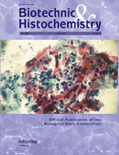
BIOTECHNIC & HISTOCHEMISTRY
Driving Discoveries in Biotechnology and DiagnosticsBIOTECHNIC & HISTOCHEMISTRY is a distinguished journal published by Taylor & Francis Ltd, dedicated to advancing the fields of histochemistry and medical laboratory technology. With a history of publication dating back to 1926 and a commitment to excellence, this journal serves as a vital resource for researchers, professionals, and students seeking to explore cutting-edge techniques and emerging trends within the biomedical sciences. As evidenced by its 2023 categorizations, including Q3 in Histology and Q2 in Medical Laboratory Technology, BIOTECHNIC & HISTOCHEMISTRY maintains a strong academic presence, with Scopus rankings reflecting its relevance and impact within the scientific community. Although it is not an open-access journal, it offers multiple access options for readers and contributors. The journal emphasizes rigorous peer review and encourages submissions that contribute to the understanding and application of histochemical techniques in diagnostics and research. By fostering scholarly communication, it aims to enhance the integration of biotechnology into clinical practice, thereby supporting the health profession’s evolving landscape.

CELLULAR AND MOLECULAR LIFE SCIENCES
Shaping Tomorrow's Science Through Rigorous Research TodayCELLULAR AND MOLECULAR LIFE SCIENCES, published by SPRINGER BASEL AG, stands as a premier journal dedicated to advancing the field of cellular and molecular biology. With an impressive 2023 impact factor reflected in its Q1 rankings across key categories—including Cell Biology, Molecular Biology, and Pharmacology—it serves as a critical platform for researchers aiming to disseminate high-quality findings in these dynamic fields. Operated under an open access framework, the journal allows broader accessibility to groundbreaking research, fostering collaboration amongst scientists globally. Based in Switzerland, CELLULAR AND MOLECULAR LIFE SCIENCES has been at the forefront of scientific publishing since 1952, adapting to contemporary scientific challenges and trends, ultimately shaping the future of life sciences.
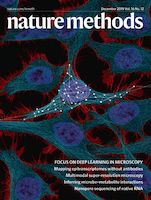
NATURE METHODS
Empowering researchers with cutting-edge methodologies.NATURE METHODS, published by NATURE PORTFOLIO, is a prestigious journal at the forefront of publishing influential research in the disciplines of Biochemistry, Biotechnology, Cell Biology, and Molecular Biology. With a high impact factor and its exemplary Q1 rankings across various categories in 2023, this journal epitomizes excellence, providing a vital platform for researchers and professionals to disseminate groundbreaking methodologies and innovative techniques that drive scientific advancement. Established in 2004 and continuing through to 2024, NATURE METHODS encompasses a diverse array of research articles, reviews, and commentary, making it an essential resource for anyone involved in the biological sciences. While the journal is not currently open access, its contributions are invaluable, offering insights that not only elevate academic discourse but also enhance experimental practice and technological application. Its influence and rigorous peer review process ensure it remains a cornerstone in the rapidly evolving fields of biochemistry and molecular biology.
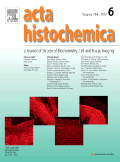
ACTA HISTOCHEMICA
Pioneering Research at the Intersection of Histochemistry and MedicineACTA HISTOCHEMICA, a prestigious journal published by Elsevier GmbH, is dedicated to advancing the field of histochemistry and its applications within cell biology and medicine. With an ISSN of 0065-1281 and an E-ISSN of 1618-0372, the journal provides a critical platform for the dissemination of high-quality research findings and reviews, integral for both emerging and established scholars. Since its inception in 1954 and continuing through to 2024, ACTA HISTOCHEMICA has maintained a strong commitment to publishing significant advancements in histology and cell biology, as evidenced by its categorization in Q3 for Cell Biology and Histology, as well as Q2 in miscellaneous medicine for the year 2023. The journal ranks favorably in Scopus, holding the 27th rank in Histology and a 200th rank in Cell Biology, highlighting its importance to the academic community. With its headquarters in Munich, Germany, ACTA HISTOCHEMICA continues to attract contributions from global researchers, fostering an international dialogue essential for the growth of knowledge in histochemistry and related disciplines.

JOURNAL OF MUSCLE RESEARCH AND CELL MOTILITY
Advancing the Frontiers of Muscle Biology and Cell DynamicsJOURNAL OF MUSCLE RESEARCH AND CELL MOTILITY, published by Springer, is a premier journal dedicated to advancing our understanding of muscle biology and cellular motility. With an ISSN of 0142-4319 and an E-ISSN of 1573-2657, this journal stands out in the fields of biochemistry, cell biology, and physiology, proudly holding a Q2 ranking in each of these categories as per 2023 metrics. Covering significant developments from its inception in 1963 to its anticipated contributions through 2024, this journal serves as a vital platform for researchers and professionals to disseminate their findings and insights globally. Although it does not currently offer open access, its robust academic rigor and relevance are evident from its Scopus rankings, making it a crucial resource for those invested in the biological sciences. With a focus on original research articles, reviews, and methodological advancements, the journal fosters innovative collaborations and discussions within the scientific community, making it an invaluable addition to any researcher’s library.